

H0me page history
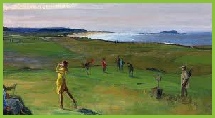
Golf course evolution
materials like surlyn or urethane blends. They are usually classified as two-piece, three-piece, or four-piece ball according to the number of layers. They come in a great variety of playing characteristics to suit the needs of golfers of different abilities.
Regulations
The current regulations mandated by the R&A and the USGA state that diameter of the golf ball cannot be any smaller than 1.680 inches (42.67 mm). The maximum velocity of the ball may not exceed 250 feet per second (274 km/h) under test conditions and the weight of the ball may not exceed 1.620 ounces (45.93 g).
Until 1990, it was permissible to use balls of LESS than 1.68 inches in diameter in tournaments under the jurisdiction of the R&A. This ball was commonly called a "British" ball while the golf ball approved by the USGA was simply the "American ball". In those earlier times, to add some fun to a friendly round, players would occasionally slip a small ball (British) into play for into the wind shots.
Aerodynamics
When a golf ball is hit, the impact, which lasts less than a millisecond, determines the ball’s velocity, launch angle and spin rate, all of which influence its trajectory (and its behavior when it hits the ground).
A ball moving through air experiences two major aerodynamic forces, lift and drag. Dimpled balls fly farther than non-dimpled balls due to the combination of two effects:
First, the dimples on the surface of a golf ball cause the boundary layer on the upstream side of the ball to transition from laminar to turbulent. The turbulent boundary layer is able to remain attached to the surface of the ball much longer than a laminar boundary and so creates a narrower, low pressure, wake and hence less pressure drag. The reduction in pressure drag causes the ball to travel farther.
Second, backspin generates lift by deforming the airflow around the ball, in a similar manner to an airplane wing. This is called the Magnus effect. Backspin is imparted in almost every shot due to the golf club's loft (i.e., angle between the clubface and a vertical plane). A backspinning ball experiences an upward lift force which makes it fly higher and longer than a ball without spin. (see Baez) Sidespin occurs when the clubface is not aligned perpendicularly to the direction of swing, leading to a lift force that makes the ball curve to one side or the other. Unfortunately the dimples magnify this effect as well as the more desirable upward lift derived from pure backspin. (Some dimple designs are claimed to reduce sidespin effects.)
To keep the aerodynamics optimal, the golf ball needs to be clean, in order to avoid any impediments to the aerodynamic effect of the ball. Thus, it is advisable that golfers frequently wash their balls. Golfers can wash their balls manually, but mechanical ball washers are also available.
Design
Dimples first became a feature of golf balls when English engineer and manufacturer William Taylor registered a patent for a dimple design in 1905. Other types of patterned covers were in use at about the same time, including one called a "mesh" and another named the "bramble", but the dimple became the dominant design due to "the superiority of the dimpled cover in flight".
Most golf balls on sale today have about 250 – 450 dimples, though there have been balls with more than 1000 dimples. The record holder was a ball with 1,070 dimples — 414 larger ones (in four different sizes) and 656 pinhead-sized ones.
Officially sanctioned balls are designed to be as symmetrical as possible. This symmetry is the result of a dispute that stemmed from the Polara, a ball sold in the late 1970s that had six rows of normal dimples on its equator but very shallow dimples elsewhere. This asymmetrical design helped the ball self-adjust its spin-axis during the flight. The USGA refused to sanction it for tournament play and, in 1981, changed the rules to ban aerodynamic asymmetrical balls. Polara's producer sued the USGA and the association paid US$1.375 million in a 1985 out-of-court settlement. Polara Golf now manufactures balls with “Self-Correcting Technology” for non-tournament play.
The United States Patent and Trademark Office's patent database is a good source of past dimple designs. Most designs are based on Platonic solids such as icosahedron.
Golf balls are usually white, but are available in other high visibility colors, which helps with finding the ball when lost or when playing in low-light or frosty conditions.
As well as bearing the maker's name or logo, balls are usually printed with numbers or other symbols to help players identify their ball.
Golf ball
A golf ball is a special ball designed to be used in the game of golf.
Under the rules of golf, a golf ball weighs no more than 1.620 oz (45.93 grams), has a diameter not less than 1.680 in (42.67 mm), and performs within specified velocity, distance, and symmetry limits. Like golf clubs, golf balls are subject to testing and approval by the Royal and Ancient Golf Club of St Andrews and the United States Golf Association, and those that do not conform with regulations may not be used in competitions (Rule 5-1).
History
Hard Wooden balls were the first used golf balls until the early 17th century, when the featherie ball added a new and exciting feature to the game of golf. A featherie is a hand sewn leather pouch stuffed with chicken or goose feathers and coated with paint. Enough feathers to fill a top hat were boiled and placed in the pouch. As the ball cooled, the feathers would expand and the hide would shrink, making a compact ball. If there were openings in the cowhide, stitching was used to close them up. The stitches mimicked the effects of dimples, and, therefore, the need for a layer of turbulence around the ball was not discovered until much later.
Due to its superior flight characteristics, the featherie remained the standard ball for more than two centuries. Despite this, there were drawbacks. An experienced ball maker could only make a few balls in one day, so they were expensive. A single ball would cost between 2 shillings and sixpence and 5 shillings, which is the equivalent of 10 to 20 US dollars today. Also, it was hard to make a perfectly spherical ball, and because of this, the ball often flew irregularly. When playing in wet weather, the stitches in the ball would rot, and the ball could split open after hitting a hard surface.
In 1848, the Rev. Dr Robert Adams Paterson (sometimes spelt Patterson) invented the gutta-percha ball (or guttie). The gutta was created from dried sap of a Malaysian Sapodilla Tree. The sap had a rubber-like feel and could be made round by heating and shaping it while hot. However, since the ball was round, it fought the air, creating little lift and going only short distances. Accidentally, it was discovered that defects in the sphere from nicks and scrapes of normal use, could provide a ball with a truer flight than a pure sphere.
Thus, makers started creating intentional defects in the surface by hammering the ball to give it an evenly dimpled shape which would cause the ball to have a more consistent ball flight. Because gutties were cheaper to produce and could be manufactured with textured surfaces to improve their aerodynamic qualities, they replaced feather balls completely within a few years.
In the 20th century, multi-layer balls were developed, first as wound balls consisting of a solid or liquid-filled core wound with a layer of rubber thread and a thin outer shell. This idea was first discovered by Coburn Haskell of Cleveland, Ohio in 1898. Haskell had driven to nearby Akron to keep a golf date with Bertram Work, then superintendent of B.F. Goodrich. While he waited for Work at the plant, Haskell idly wound a long rubber thread into a ball. When he bounced the ball, it flew almost to the ceiling. Work suggested Haskell put a cover on the creation, and that was the birth of the 20th century golf ball. The design allowed manufacturers to fine-tune the length, spin and "feel" characteristics of balls. Wound balls were especially valued for their soft feel, and continued to be popular until the early years of the 21st century.
Modern balls usually consist of several layers of various synthetic

Golf origins

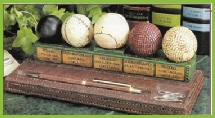
Golf balls

Equipment development

Golf clubs components
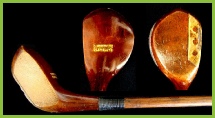
Golf woods
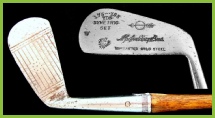
Long and mid irons
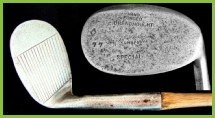
Short irons and wedges
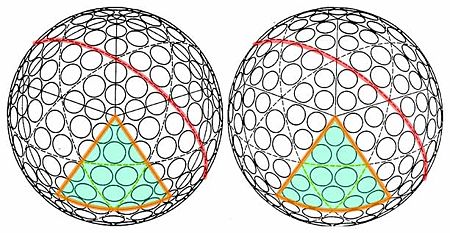
Selection
There are many types of golf balls on the market, and customers often face a difficult decision. Golf balls are divided into two categories: recreational and advanced balls. Recreational balls are oriented toward the ordinary golfer, who generally have low swing speeds (80 miles per hour (130 km/h) or lower) and lose golf balls on the course easily. These balls are made of two layers, with the cover firmer than the core. Their low compression and side spin reduction characteristics suit the lower swing speeds of average golfers quite well. Furthermore, they generally have lower prices than the advanced balls, lessening the financial impact of losing a ball to a hazard or out of bounds.
Advanced balls are made of multiple layers (three or more), with a soft cover and firm core. They induce a greater amount of spin from lofted shots (wedges especially), as well as a sensation of softness in the hands in short-range shots. However, these balls require a much greater swing speed that only the physically strong players could carry out to compress at impact. If the compression of a golf ball does not match a golfer's swing speed, either the lack of compression or over-compression will occur, resulting in loss of distance. There are also many brands and colors to choose from, with colored balls and better brands generally being more expensive, making an individual's choice more difficult.
Practice/range balls
A practice ball or range ball is similar to a recreational golf ball, but is designed to be inexpensive, durable and have a shorter flight distance, while still retaining the principal behaviors of a "real" golf ball and so providing useful feedback to players. All of these are desirable qualities for use in an environment like a driving range, which may be limited in maximum distance, and must have many thousands of balls on-hand at any time that are each hit and mis-hit hundreds of times during their useful life.
To accomplish these ends, practice balls are typically harder-cored than even recreational balls, have a firmer, more durable cover to withstand the normal abrasion caused by a club's hitting surface, and are made as cheaply as possible while maintaining a durable, quality product. Practice balls are typically labelled with "PRACTICE" in bold lettering, and often also have one or more bars or lines printed on them, which allow players (and high-speed imaging aids) to see the ball's spin more easily as it leaves the tee or hitting turf.
Practice balls conform to all applicable requirements of the Rules of Golf, and as such are legal for use on the course, but as the hitting characteristics are not ideal, players usually opt for a better-quality ball for actual play.

Golf putter
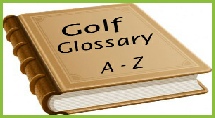
Glossary